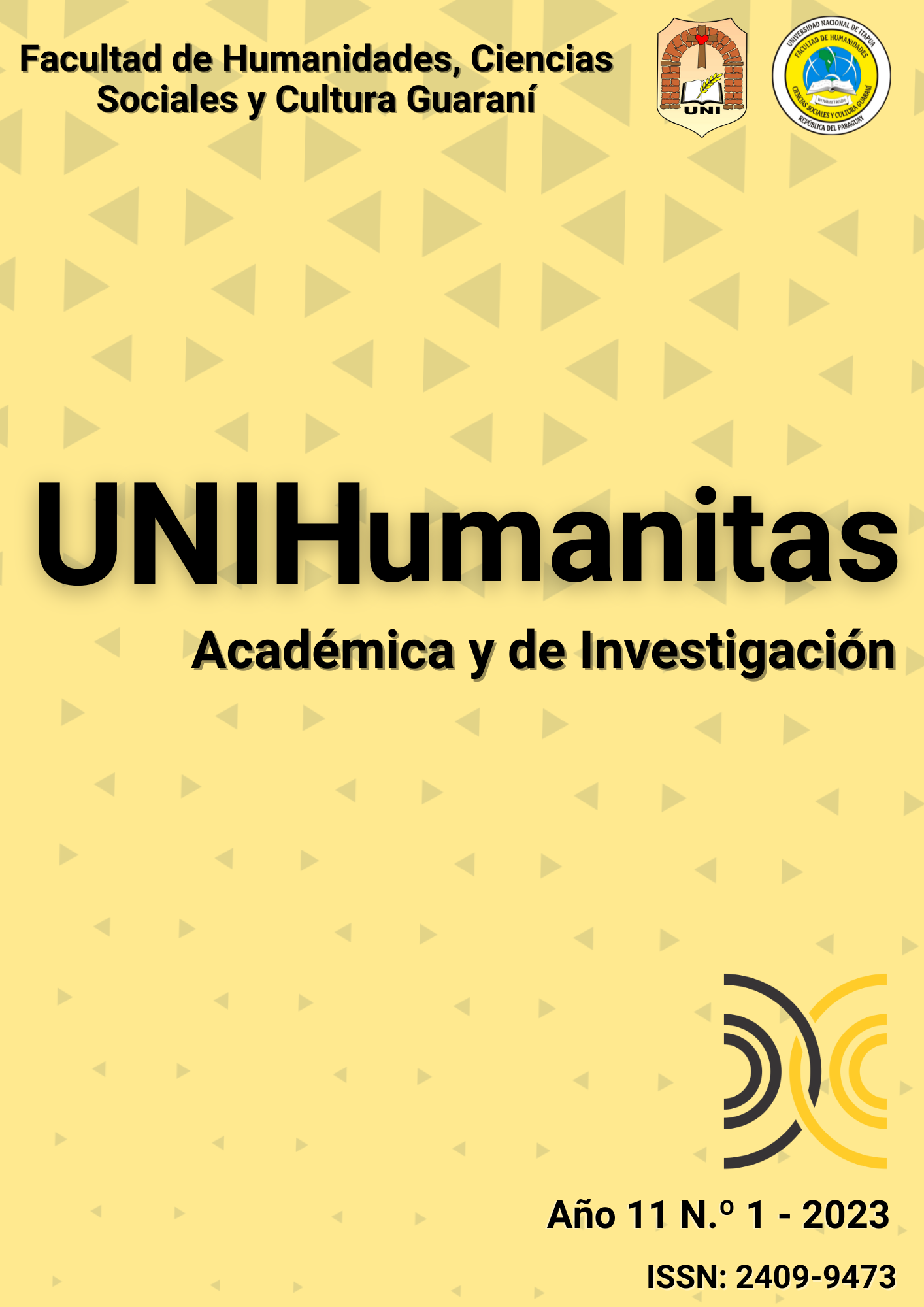Analysis of the results obtained by middle school teachers in a private school with the implementation of the Inverted Classroom method
Main Article Content
Abstract
The purpose of this research was to analyze the results obtained by middle school teachers in a private school in Lambaré with the implementation of the inverted classroom method. The frame of reference of the work is based on the teaching and learning strategies of the inverted classroom. The data collection was carried out through semi-structured interviews with teachers, which included open-ended questions on the implementation of the inverted classroom method, and a questionnaire or interview guide with 14 questions was used as an instrument. The design used was non-experimental, the approach used was qualitative, in order to know through the interview and the dialogue with the teachers of the institution the aspects of the implementation of the inverted classroom method, in order to observe the results obtained. The research work was descriptive because it allowed a descriptive analysis of the results obtained by middle school teachers with the implementation of the inverted classroom in a private school in Lambaré. The group of teachers who participated in the experience were a total of 10 and a probabilistic sample was used, all teachers had the same possibility of being selected, 4 teachers were interviewed. It has been noted that the results obtained at the middle level in the school of Lambaré were positive in the acquisition of instrumental, interpersonal, critical thinking and systemic competencies, influencing better academic results, as expressed by the teachers interviewed.
Article Details

This work is licensed under a Creative Commons Attribution 4.0 International License.
References
Aguilera R., C., Manzano L., A., Martínez M., I., Lozano S., M., & Casiano Y., C. (2017). El modelo Flipped classroom. En La psicología hoy: retos, logros y perspectivas de futuro. Atención a la diversidad (p. 262). Red de Revistas Científicas de América Latina, el Caribe, España y Portugal. Recuperado de https://www.redalyc.org/pdf/3498/349853537027.pdf
Ávila, X., Cervera, N., De Britos, C., Martinez, E., Perez, A., & Perdigués, B. (2017). Diseño y aplicación de la Flipped classroom (1ra ed., p. 73). Editorial GRAO.
Archbold, M. F. A., Nuñez, G. L. J., & Padilla, D. L. F. (2019). Análisis de una experiencia disruptiva en la práctica de enseñanza y aprendizaje desde la mirada docente. [Trabajo de grado, Pontificia Universidad Javeriana, Facultad de Educación] (p. 50). Recuperado de https://repository.javeriana.edu.co/bitstream/handle/10554/46606/Archbold%20Nu%c3%b1ez%20y%20Padilla_Aula%20Invertida_TG.pdf?sequence=2&isAllowed=y
Barao, M. L., & Palau, M. R. F. (2016). Análisis de la implementación de Flipped Classroom en las asignaturas instrumentales de 4º de Educación Secundaria Obligatoria. Revista Electrónica de Tecnología Educativa, 55. Recuperado de https://www.edutec.es/revista/index.php/edutec-e/article/view/733/Edutec_n55_Borao_Palau
Blasco, A. C., Lorenzo, J., & Sarsa, J. (2016). La clase invertida y el uso de vídeos de software educativo en la formación inicial del profesorado: Estudio cualitativo. Revista de Innovación Educativa, Universidad de Valencia. Recuperado de https://www.redalyc.org/journal/3495/349551247003/html/

